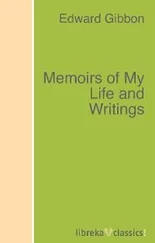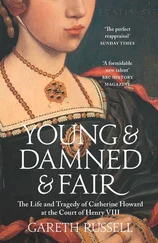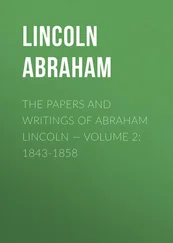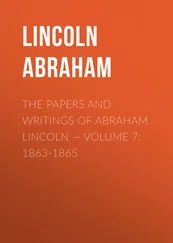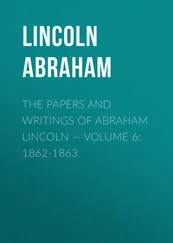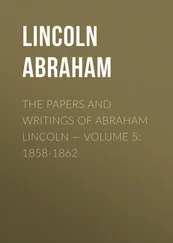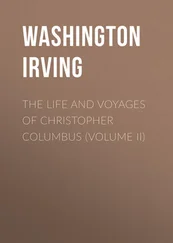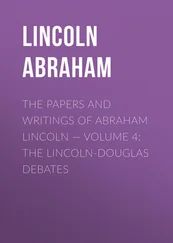Henry Fuseli - The Life and Writings of Henry Fuseli, Volume 2 (of 3)
Здесь есть возможность читать онлайн «Henry Fuseli - The Life and Writings of Henry Fuseli, Volume 2 (of 3)» — ознакомительный отрывок электронной книги совершенно бесплатно, а после прочтения отрывка купить полную версию. В некоторых случаях можно слушать аудио, скачать через торрент в формате fb2 и присутствует краткое содержание. Жанр: visual_arts, foreign_antique, foreign_prose, на английском языке. Описание произведения, (предисловие) а так же отзывы посетителей доступны на портале библиотеки ЛибКат.
- Название:The Life and Writings of Henry Fuseli, Volume 2 (of 3)
- Автор:
- Жанр:
- Год:неизвестен
- ISBN:нет данных
- Рейтинг книги:5 / 5. Голосов: 1
-
Избранное:Добавить в избранное
- Отзывы:
-
Ваша оценка:
- 100
- 1
- 2
- 3
- 4
- 5
The Life and Writings of Henry Fuseli, Volume 2 (of 3): краткое содержание, описание и аннотация
Предлагаем к чтению аннотацию, описание, краткое содержание или предисловие (зависит от того, что написал сам автор книги «The Life and Writings of Henry Fuseli, Volume 2 (of 3)»). Если вы не нашли необходимую информацию о книге — напишите в комментариях, мы постараемся отыскать её.
The Life and Writings of Henry Fuseli, Volume 2 (of 3) — читать онлайн ознакомительный отрывок
Ниже представлен текст книги, разбитый по страницам. Система сохранения места последней прочитанной страницы, позволяет с удобством читать онлайн бесплатно книгу «The Life and Writings of Henry Fuseli, Volume 2 (of 3)», без необходимости каждый раз заново искать на чём Вы остановились. Поставьте закладку, и сможете в любой момент перейти на страницу, на которой закончили чтение.
Интервал:
Закладка:
With this simplicity of manner and materials the art seems to have proceeded from Polygnotus, Aglaophon, Phidias, Panænus, Colotes, and Evenor, the father of Parrhasius, during a period of more or less disputed Olympiads, to the appearance of Apollodorus the Athenian, who applied the essential principles of Polygnotus to the delineation of the species, by investigating the leading forms that discriminate the various classes of human qualities and passions. The acuteness of his taste led him to discover that as all men were connected by one general form, so they were separated each by some predominant power, which fixed character and bound them to a class: that in proportion as this specific power partook of individual peculiarities, the farther it was removed from a share in that harmonious system which constitutes nature, and consists in a due balance of all its parts; thence he drew his line of imitation, and personified the central form of the class, to which his object belonged; and to which the rest of its qualities administered without being absorbed: agility was not suffered to destroy firmness, solidity, or weight; nor strength and weight agility; elegance did not degenerate to effeminacy, or grandeur swell to hugeness; such were his principles of style: his expression extended them to the mind, if we may judge from the two subjects mentioned by Pliny, in which he seems to have personified the characters of devotion and impiety; that , in the adoring figure of a priest, perhaps of Chryses, expanding his gratitude at the shrine of the God whose arrows avenged his wrongs and restored his daughter: and this , in the figure of Ajax wrecked, and from the sea-swept rock hurling defiance unto the murky sky. As neither of these subjects can present themselves to a painter's mind without a contrast of the most awful and terrific tones of colour, magic of light and shade, and unlimited command over the tools of art, we may with Pliny and with Plutarch consider Apollodorus as the first assertor of the pencil's honours, as the first colourist of his age, and the man who opened the gates of art which the Heracleot Zeuxis entered. 11 11 Hic primus species exprimere instituit, Pliny xxxv. 36, as species in the sense Harduin takes it, 'oris et habitus venustas,' cannot be refused to Polygnotus, and the artists immediately preceding Apollodorus, it must mean here the subdivisions of generic form; the classes. At this period we may with probability fix the invention of local colour, and tone; which, though strictly speaking it be neither the light nor the shade, is regulated by the medium which tinges both. This, Pliny calls 'splendour.' To Apollodorus Plutarch ascribes likewise the invention of tints, the mixtures of colour and the gradations of shade, if I conceive the passage rightly: Ἀπολλοδωρος ὁ Ζωγραφος Ἀνθρωπων πρωτος ἐξευρων φθοραν και ἀποχρωσιν Σκιας, (Plutarch, Bellone an pace Ath., &c. 346.) This was the element of the ancient Ἁρμογη, that imperceptible transition, which, without opacity, confusion, or hardness, united local colour, demitint, shade, and reflexes.
From the essential style of Polygnotus and the specific discrimination of Apollodorus, Zeuxis, by comparison of what belonged to the genus and what to the class, framed at last that ideal form, which in his opinion, constituted the supreme degree of human beauty, or in other words, embodied possibility, by uniting the various but homogeneous powers scattered among many, in one object, to one end. Such a system, if it originated in genius, was the considerate result of taste refined by the unremitting perseverance with which he observed, consulted, compared, selected the congenial but scattered forms of nature. Our ideas are the offspring of our senses, we are not more able to create the form of a being, we have not seen, without retrospect to one we know, than we are able to create a new sense. He whose fancy has conceived an idea of the most beautiful form must have composed it from actual existence, and he alone can comprehend what one degree of beauty wants to become equal to another, and at last superlative. He who thinks the pretty handsome, will think the handsome a beauty, and fancy he has met an ideal form in a merely handsome one, whilst he who has compared beauty with beauty, will at last improve form upon form to a perfect image; this was the method of Zeuxis, and this he learnt from Homer, whose mode of ideal composition, according to Quintilian, he considered as his model. Each individual of Homer forms a class, expresses and is circumscribed by one quality of heroic power; Achilles alone unites their various but congenial energies. The grace of Nireus, the dignity of Agamemnon, the impetuosity of Hector, the magnitude, the steady prowess of the great, the velocity of the lesser Ajax, the perseverance of Ulysses, the intrepidity of Diomede, are emanations of energy that reunite in one splendid centre fixed in Achilles. This standard of the unison of homogeneous powers exhibited in successive action by the poet, the painter, invigorated no doubt by the contemplation of the works of Phidias, transferred to his own art and substantiated by form , when he selected the congenial beauties of Croton to compose a perfect female. Like Phidias too, he appears to have been less pathetic than sublime, and even in his female forms more ample and august than elegant or captivating: his principle was epic, and this Aristotle either considered not or did not comprehend, when he refuses him the expression of character in action and feature: Jupiter on his throne encircled by the celestial synod, and Helen, the arbitress of Troy, contained probably the principal elements of his style; but he could trace the mother's agitation in Alcmena, and in Penelope the pangs of wedded love.
On those powers of his invention which Lucian relates in the memoir inscribed with the name of Zeuxis, I shall reserve my observations for a fitter moment. Of his colour we know little, but it is not unreasonable to suppose that it emulated the beauties and the grandeur of his design; and that he extended light and shade to masses, may be implied from his peculiar method of painting monochroms on a black ground, adding the lights in white. 12 12 'Pinxit et monochromata ex albo.' Pliny, xxxv. 9. This Aristotle, Poet. c. 6, calls λευκογραφειν.
The correctness of Parrhasius succeeded to the genius of Zeuxis. He circumscribed his ample style, and by subtle examination of outline established that standard of divine and heroic form which raised him to the authority of a legislator from whose decisions there was no appeal. He gave to the divine and heroic character in painting, what Polycletus had given to the human in sculpture, by his Doryphorus, a canon of proportion. Phidias had discovered in the nod of the Homeric Jupiter the characteristic of majesty, inclination of the head : this hinted to him a higher elevation of the neck behind, a bolder protrusion of the front, and the increased perpendicular of the profile. To this conception Parrhasius fixed a maximum; that point from which descends the ultimate line of celestial beauty, the angle within which moves what is inferior, beyond which what is portentous. From the head conclude to the proportions of the neck, the limbs, the extremities; from the father to the race of gods; all, the sons of one, Zeus; derived from one source of tradition, Homer; formed by one artist, Phidias: on him measured and decided by Parrhasius. In the simplicity of this principle, adhered to by the succeeding periods, lies the uninterrupted progress and the unattainable superiority of Grecian art. With this prerogative, which evidently implies a profound as well as general knowledge of the parts, how are we to reconcile the criticism passed on the intermediate parts of his forms as inferior to their outline? or how could Winkelmann, in contradiction with his own principles, explain it, by a want of anatomic knowledge? 13 13 In lineis extremis palmam adeptus – minor tamen videtur, sibi comparatus, in mediis corporibus exprimendis. Pliny, xxxv. 10. Here we find the inferiority of the middle parts merely relative to himself. Compared with himself, Parrhasius was not all equal.
how is it possible to suppose that he who decided his outline with such intelligence that it appeared ambient, and pronounced the parts that escaped the eye, should have been uninformed of its contents? let us rather suppose that the defect ascribed to the intermediate forms of his bodies, if such a fault there was, consisted in an affectation of smoothness bordering on insipidity, in something effeminately voluptuous, which absorbed their character and the idea of elastic vigour; and this Euphranor seems to have hinted at, when in comparing his own Theseus with that of Parrhasius, he pronounced the Ionian's to have fed on roses, his own on flesh: 14 14 Theseus, in quo dixit, eundem apud Parrhasium rosa pastum esse, suum vero carne. Plin. xxxv. 11.
emasculate softness was not, in his opinion, the proper companion of the contour, or flowery freshness of colour an adequate substitute for the sterner tints of heroic form.
Интервал:
Закладка:
Похожие книги на «The Life and Writings of Henry Fuseli, Volume 2 (of 3)»
Представляем Вашему вниманию похожие книги на «The Life and Writings of Henry Fuseli, Volume 2 (of 3)» списком для выбора. Мы отобрали схожую по названию и смыслу литературу в надежде предоставить читателям больше вариантов отыскать новые, интересные, ещё непрочитанные произведения.
Обсуждение, отзывы о книге «The Life and Writings of Henry Fuseli, Volume 2 (of 3)» и просто собственные мнения читателей. Оставьте ваши комментарии, напишите, что Вы думаете о произведении, его смысле или главных героях. Укажите что конкретно понравилось, а что нет, и почему Вы так считаете.

